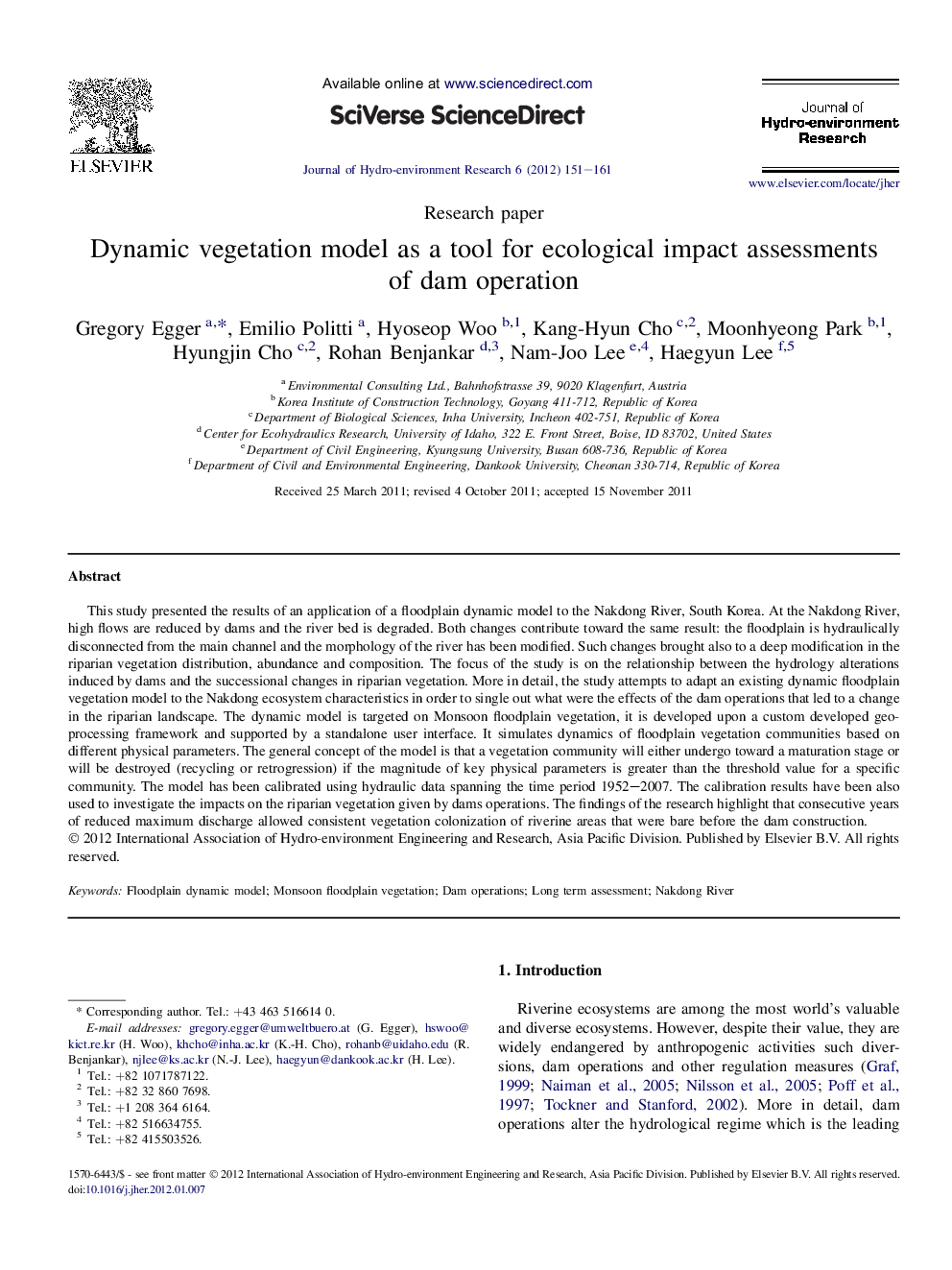| Article ID | Journal | Published Year | Pages | File Type |
|---|---|---|---|---|
| 4493789 | Journal of Hydro-environment Research | 2012 | 11 Pages |
This study presented the results of an application of a floodplain dynamic model to the Nakdong River, South Korea. At the Nakdong River, high flows are reduced by dams and the river bed is degraded. Both changes contribute toward the same result: the floodplain is hydraulically disconnected from the main channel and the morphology of the river has been modified. Such changes brought also to a deep modification in the riparian vegetation distribution, abundance and composition. The focus of the study is on the relationship between the hydrology alterations induced by dams and the successional changes in riparian vegetation. More in detail, the study attempts to adapt an existing dynamic floodplain vegetation model to the Nakdong ecosystem characteristics in order to single out what were the effects of the dam operations that led to a change in the riparian landscape. The dynamic model is targeted on Monsoon floodplain vegetation, it is developed upon a custom developed geoprocessing framework and supported by a standalone user interface. It simulates dynamics of floodplain vegetation communities based on different physical parameters. The general concept of the model is that a vegetation community will either undergo toward a maturation stage or will be destroyed (recycling or retrogression) if the magnitude of key physical parameters is greater than the threshold value for a specific community. The model has been calibrated using hydraulic data spanning the time period 1952–2007. The calibration results have been also used to investigate the impacts on the riparian vegetation given by dams operations. The findings of the research highlight that consecutive years of reduced maximum discharge allowed consistent vegetation colonization of riverine areas that were bare before the dam construction.
